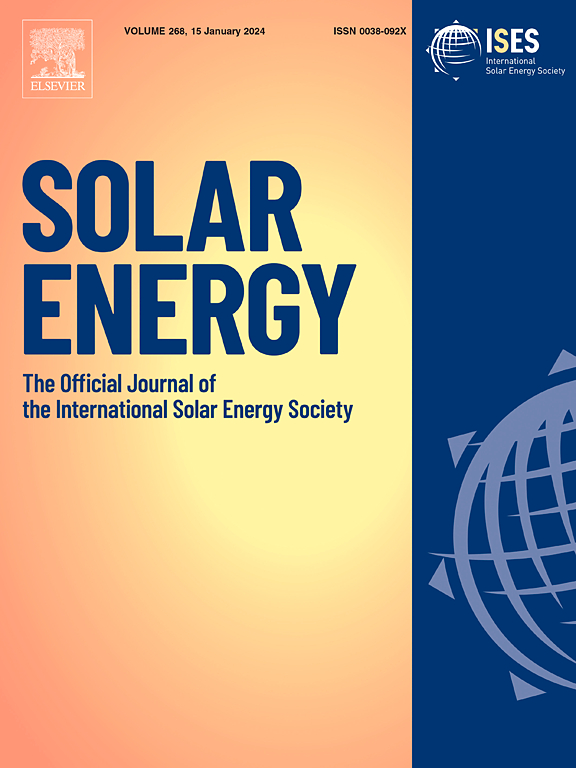Nanocrystal-assisted defect control in hybrid perovskite solar cells for improved photovoltaic performance
IF 6
2区 工程技术
Q2 ENERGY & FUELS
引用次数: 0
Abstract
Organometallic halide perovskite solar cells (PSCs) have emerged as leading candidates for new-generation photovoltaics due to their exceptional power conversion efficiency (PCE) and superior optoelectronic properties, including long carrier lifetimes, extended diffusion lengths, and high absorption ability. However, defects at grain boundaries and surfaces act as non-radiative recombination centres, severely degrading device performance and stability. In this study, we introduce a quantum dot (QD)-assisted anti-solvent engineering strategy (AES) to regulate perovskite crystallization and minimize defect states. By incorporating various ratios (0.3, 0.6, and 0.9 mg/mL) of CdSe/ZnS core–shell QDs with green (g-QDs) and red (r-QDs) emission into the anti-solvent process, we achieve a compact, pinhole-free perovskite morphology with reduced trap-assisted recombination. As a result, r-QD-incorporated double-cation PSCs achieve a breakthrough PCE exceeding 21 %, outperforming the control devices (18.3 %). Furthermore, QD-passivated PSCs exhibit remarkable operational stability, retaining over 90 % of their initial performance over 600 h of light exposure under maximum power point tracking (MPPT) conditions. The obtained findings highlight the potential of QD-assisted passivation in mitigating critical limitations in PSC technology, paving the way for enhanced stability and long-term performance through advanced anti-solvent engineering.
纳米晶辅助钙钛矿混合太阳能电池缺陷控制提高光伏性能
有机金属卤化物钙钛矿太阳能电池(PSCs)由于其优异的功率转换效率(PCE)和优越的光电性能,包括长载流子寿命,延长扩散长度和高吸收能力,已成为新一代光伏电池的主要候选者。然而,晶界和表面的缺陷作为非辐射复合中心,严重降低了器件的性能和稳定性。在这项研究中,我们引入了量子点(QD)辅助的反溶剂工程策略(AES)来调节钙钛矿的结晶和最小化缺陷状态。通过将不同比例(0.3、0.6和0.9 mg/mL)的具有绿色(g-QDs)和红色(r-QDs)发射的CdSe/ZnS核壳量子点加入到抗溶剂工艺中,我们获得了紧凑的、无针孔的钙钛矿形态,减少了陷阱辅助重组。结果,含有r- qd的双阳离子PSCs实现了超过21%的突破性PCE,优于控制器件(18.3%)。此外,量子点钝化的psc表现出显著的运行稳定性,在最大功率点跟踪(MPPT)条件下,在600小时的光照射下保持了90%以上的初始性能。所获得的发现突出了量子点辅助钝化在减轻PSC技术的关键限制方面的潜力,为通过先进的抗溶剂工程提高稳定性和长期性能铺平了道路。
本文章由计算机程序翻译,如有差异,请以英文原文为准。
求助全文
约1分钟内获得全文
求助全文
来源期刊

Solar Energy
工程技术-能源与燃料
CiteScore
13.90
自引率
9.00%
发文量
0
审稿时长
47 days
期刊介绍:
Solar Energy welcomes manuscripts presenting information not previously published in journals on any aspect of solar energy research, development, application, measurement or policy. The term "solar energy" in this context includes the indirect uses such as wind energy and biomass
 求助内容:
求助内容: 应助结果提醒方式:
应助结果提醒方式:


